VII Social Science Lesson Plan: August-September
Class VII Social Science Lesson Plan for the months of August-September is prepared for teachers teaching in the elementary school. This class VII Social Science Lesson Plan includes chapters in Geography: “Air”, one chapter in History, “Rulers and Buildings”, and one major chapter in Political Science. “Growing up as Boys and Girls”. This Grade VII Social Science lesson plan will definitely help teachers. In addition, the activities planned in the lesson plan also address the need of every student.
Also read: Class VII Social Science Lesson Plan For The Month Of June-July With Classroom Activities
Topics to be covered:
Geography:
Chapter 4. Air
History:
Chapter 5 Rulers and Buildings
Political Science:
Chapter 4: Growing up as Boys and Girls
Class VII Social Science Lesson Plan For The Month Of August-September

Class VII Social Science (Geography) Lesson Plan – Activity Based.
Chapter 4: Air
Specific Objective:
- To know what is there around our Earth.
- What are the different layers of Atmosphere?
- Importance of different layers of Atmosphere.
Teaching Method
Teaching aids: Text Book, Black Board, and PPT
Technique: Interactive with common examples.
The teacher begins the chapter by asking a question
Suppose you are standing alone in an open field.
So what’s around you?
Waits for the response.
Air.
Yes, Similarly, the earth also lies in space, and what is there around it?
Air.
It means, our earth is surrounded by air all around what we call the atmosphere.
In this way, by asking very simple questions, the teacher creates interest in the topic.
Also, make sure that the children are involved in the discussion.
Picks up a globe.
This is our earth and far from it is the sun.
But, what is in between the earth and the sun?
Atmosphere.
Today we will read about the different layers of the atmosphere.
For more interesting facts and to understand this chapter in simple language,
Layers of the atmosphere:
Method: Interactive

HARMFUL SUN RAYS PASS THROUGH THE HOLE.
Teacher: Have you seen your mother using a strainer in the kitchen?
Students: Yes
Teacher: When?
Students: When she filters tea in the cup.
Teacher: What actually is she doing?
Students: with the help of a stainer, she filters unwanted things from going into the cup?
Teacher: What if there is a hole in the stainer?
Students: Unwanted things will pass through it in the cup.
Teacher: Exactly. Similarly, there are different layers in the atmosphere.
It looks like a multi-layered cake of different thicknesses.
Names are Troposphere, Stratosphere, Mesosphere, Thermosphere, and exosphere.
They also act as strainers.
They filter the unwanted rays coming from the sun.
Click on the link Class VII Geography Chapter 4 “Air”
एनसीईआरटी कक्षा 7 सामाजिक विज्ञान भूगोल अध्याय 4 “वायु”
Content/ Teaching Points:
- Composition of the Atmosphere
- Structure of the Atmosphere
- Weather and Climate
- Temperature.
Activity 1
Aim: To understand the composition of the atmosphere.
Materials required: A Balloon
Procedure: The teacher takes a balloon.
Fill it with air.
And asks a question to the class.
Now, can you say which gas is there in the balloon?
Is it oxygen, carbon dioxide, Nitrogen, or any other gas?
Students’ response: Teacher, it has all the gases in it.
Teacher: Yes, But, are all the gases in equal composition?
Students: No response.
Teacher: In the air, Nitrogen is 78%, Oxygen is 21%, carbon dioxide and all other gases are 1%.
This is called the composition of the atmosphere.
Written work: Now, quickly write down the names of three important gases present in our atmosphere.
Also, draw a pie chart using different colors to show the composition of the atmosphere.
Assessment criteria:
- Knowledge and understanding of the topic
- Presentation
- Involvement and
- Accuracy
Classwork:
i) MCQs and short answer type questions will be done.
ii) Long answer-type questions will be discussed and done in the class.
Home-work:
The teacher prepares a worksheet from the chapter.
Values imparted:
A deeper understanding of the earth’s atmosphere.
Integrated learning:
Integrating with science.
How do plants take Nitrogen?
Do you know at what time MAXIMUM & MINIMUM TEMPERATURE in a day is recorded?
Learning Outcome:
After the completion of this chapter, students will be able to
- identify the layers of the atmosphere.
- understands the importance of these layers.
- explain the Greenhouse effect.
Remedial Measure:
Personal attention to slow learners.
You may like to read:
Best Role Play Activities To Improve Communication Skills
7 SHORT AND EDUCATIONAL SOCIAL SCIENCE ACTIVITIES FOR MIDDLE SCHOOL
Class VII Social Science Lesson Plan For The Month Of August-September

History:
Chapter 5 Rulers and Buildings
Objective:
- To develop an interest in the subject.
- To know about the buildings, gardens, palaces, and forts and their construction.
Specific Objective:
- Students will acquire knowledge about the materials used to build palaces, temples, forts, and gardens.
- They will be sensitized toward engineering and construction skills.
Teaching Method:
Teaching aids Textbook, PPT, Videos from youtube.
Technique: Interactive and storytelling method.
The teacher interacts with the students by asking a few questions.
Teacher: Who constructs houses, big buildings, bridges etc.
Students: Engineer.
Teacher: Why only engineers?
Students: Because they study about it.
Teacher: Do you think an engineer can construct better than a common man?
Students: Yes.
Now, the teacher shows a few images of forts, palaces, temples, Qutub Minar, etc.
Do you know children, all these buildings and forts and palaces were built in the country when there were no engineering colleges.
Student’s response: silence.
In this way, the teacher is able to draw everybody’s attention and through storytelling method explains the chapter.
Content/ Teaching Points:
- Engineering skills and construction
- Temples, Mosques, and Tanks
- Destruction of temples.
- Gardens, Tombs, and Forts
- Region and Empire.
Activity 1: worksheet
The teacher distributes a worksheet that has the following questions:
Time: 30 Minutes.
Marks: 20
Instructions:
- Two students will share one worksheet.
- Students have to find the answers from the textbook and complete the worksheet.
Q1. When and by whom was the Qutub Minar built?
Q2. What were the two types of structures built between the 8th to 18th centuries?
Q3. What do you mean by a superstructure?
Q4. By which dynasty was the Kandariya Mahadeva Temple constructed? To which God is the temple dedicated?
Q5. What were the main reasons behind the construction of temples by the King?
Q6. Why were temples destroyed?
Q7. Why did Muhammad Ghajni attack the temple of Somnath?
Q8. What is Pietradura?
Q9. What is a shikhara? Which Indian temple has the tallest shikhara?
Q10. What is Chahar Bagh? Why is it so called?
Assessment criteria:
- Accuracy of the answer.
- Presentation
- Involvement and
- Handwriting.
Classwork:
- NCERT question answers will be discussed and done in the class.
Home Work:
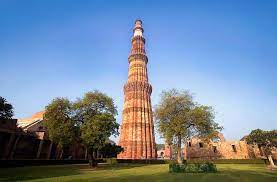
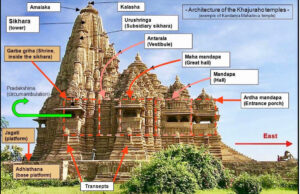
i) Look at image 1 and Draw or paste the image of Qutub Minar and mention its architectural beauty?
ii) Draw the second image and label the different parts of the temple.
Values Imparted:
sense of pride for our heritage.
Respecting the treasure and feel proud of our Architectural and engineering skills in the past.
Integrated Learning:
Integrating with English
Write an essay on the topic “Why protecting National Monuments is good for the country“?
Learning Outcome:
After the completion of the chapter, children will be able to
Identify, protect and explain the architectural beauty of Historical monuments of India.
Remedial Measures:
- The teacher will help the slow learners in doing the question answers.
- Will provide short notes in simple language.
Class VII Social Science Lesson Plan For The Month Of August-September

Chapter 4: Growing up as Boys and Girls
“You will often feel as if you don’t fit, but it has never been your destiny to fit in. You were born to stand out.” — Melena Rossouw
General Objective:
- To develop students’ interest in the subject.
- To apply the knowledge practically in real life.
- Developing scientific temperament among the students.
- To enhance students’ learning ability.
Specific Objective:
- Students will acquire knowledge about Gender inequality.
- They will also know how gender inequality hampers social development.
- Children will also acquire knowledge between Gender differences and gender-equality.
Checking Previous Knowledge:
The teacher checks the previous knowledge of the students by asking a question.
Who do you think is superior? Men or Women.
Introducing Topic:
The teacher introduces the topic by asking basic questions like:
Teacher: Name some important religions in India?
Student’s responses: Hindus, Muslims, Christians, Sikhs, Jains, Bodh, Parses, etc.
Teacher: Are all the religions the same or different.
Students: Different.
Teacher: Are all religions good or bad.
Students: Good.
Teacher: It means things that look different can also be good.
So, do you think people of different heights, health, looks, color, sex, caste, and religion can also be good?
Should we consider them inferior?
Students: no answer (problematic question)
Statement of Topic
O.K. So, today we are going to discuss how people discriminate on the basis of gender.
Teaching aids: Text Book, Black Board, Images, and PPT
Technique: Interactive with common examples.
The teacher interacts with students by asking simple questions.
Who cooks food in your house?
Who brings vegetables to your house?
In the absence of a maidservant, who cleans the utensils?
Who works and earns for the family?
Is there any such work that can be performed only by women or only by men?
No.
Content/ Teaching Points:
Growing up as boys and girls.
case study 1: Growing up in Samoa in the 1920s.
case study 2: Growing up in Madhya Pradesh in the 1960s.
Valuing housework.
Lives of domestic workers.
Activity:
Make a list of work performed by your mother at home.
Make a list of work performed by your father at home.
Compare their work and find out whose work is important?
Write your conclusion.
Classwork:
i) Objective and short answer type questions will be done.
ii) Long answer type questions will be discussed and done in the class.
Home-work:
Draw or paste the pictures of different types of work performed by men and women.
Values imparted:
Social responsibility.
Treating men and women equally.
Multidisciplinary Integrated learning:
- History: compare the role of women and men in early days with today.
- Art: Draw a scene were men and women are working together.
Other Activities:
Discuss and Debate
On one hand people talk about Gender equality and on the other hand they also talk about women empowerment. It is not discrimination?
Assessment Criteria:
Indicators
- Relevance of Content
- Logical Approach
- Creativeness
- Analytical Skills
Learning Outcome:
After the completion of this chapter, students will be able to
- explain gender equality.
- appreciate the role of men and women in society.
- learn about the changing mindset of people.
Remedial Measure:
Pair and Share
Children sitting on the left side of the row will explain the chapter to the children sitting on their right.
Class VII Social Science Lesson Plan For The Month Of August-September
Conclusion:
We hope that Class VII Social Science lesson plans will help teachers. You may include more activities in your social sciences lesson plan.
If you are looking for Class VII Social Science Lesson Plan for the previous months, click the link below
13 Points you Must Include In Your Class VII Social Science Lesson Plan
Class VII Social Science Term II Geography: Activity Based Lesson Plan


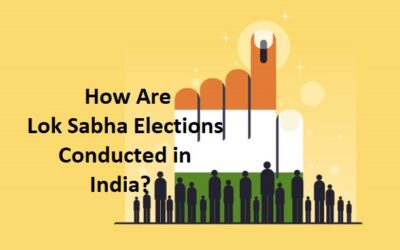
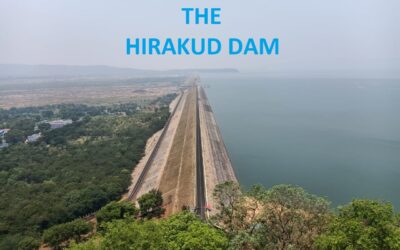
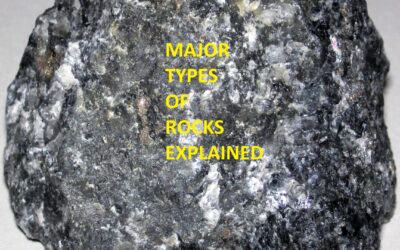
0 Comments